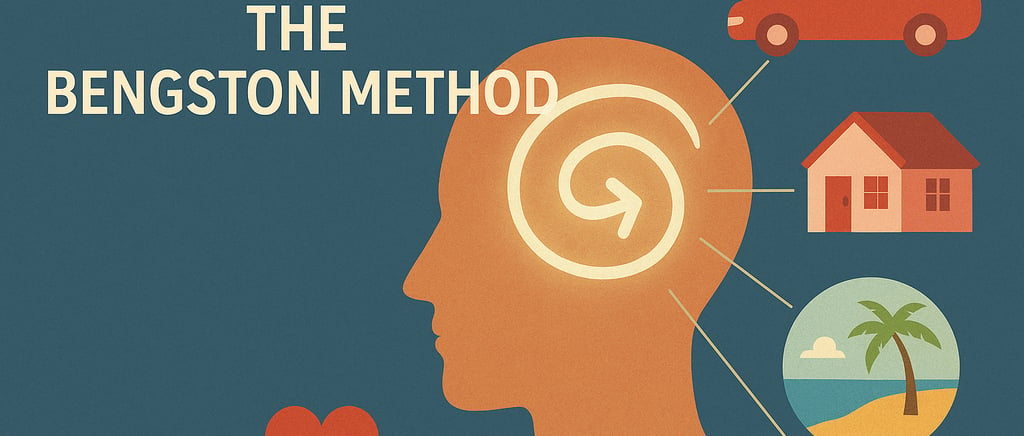How to Learn the Bengston Method
Step‑by‑Step Image Cycling Tutorial


How to Learn the Bengston Method
Learning the Bengston Method begins with a practice called Image Cycling—a unique mental technique developed by Dr. William Bengston that plays a central role in his energy healing approach. While this method can be used during healing sessions, it’s also a powerful tool in daily life. It allows you to shift your focus, access deeper states of intention, and potentially influence the outcomes you want to see. This post will guide you through the foundational steps of learning Image Cycling,.
Step 1: Make Your List
The first step in learning the Bengston Method is to create a personal list of things you want. These should be entirely selfish desires—things you do not currently have, but would recognize instantly if they arrived in your life. There are no limits on the size or scope of this list. You can include physical objects, life situations, experiences or skills. The only rule is that each item must be something you want for yourself, not for others, and not to appear altruistic or noble.
You are encouraged to vividly imagine these items using all of your senses. Picture what it looks like, sounds like, smells like, even tastes like. Once you’ve done that, reduce each one to a single word or image that can act as a mental cue. This becomes your “cycling list.”
Your list is fluid—it will change as your wants change. You’re not committing to these desires forever.
Step 2: Understand the Role of the Mind
One of the core ideas in the Bengston Method is that your conscious mind—what Dr. Bengston playfully calls your “pea brain”—is not equipped to make the healing happen. Its job is simply to assemble the list. Once cycling begins, the goal is to let go. Image Cycling is about entering a flow state where your conscious thoughts get out of the way, allowing deeper processes to unfold.
This is not a meditative state in the usual sense. You aren’t clearing your mind or slowing down. In fact, you’re doing the opposite—speeding up your thoughts until they become a blur. The eventual goal is for this process to recede into the background, just like breathing or riding a bike. At that point, it’s said that cycling becomes mindless and automatic, and that’s when its real power begins to emerge.
Step 3: Start Cycling
Now that you’ve built your list, you’re ready to begin Image Cycling. The method is simple: run through the items on your list in your mind as quickly as you can. Start slowly—perhaps one image per second, keeping rhythm by tapping your fingers or using one of the vizualizers on this iste. Then, increase the speed. Eventually, you want to reach a level called “hypercycling,” where you move through the entire list at many images per second. At this point, the images blur together and lose their emotional weight.
Practice in short bursts, but regularly. Five to ten minutes a day is a good start. Over time, you’ll find that cycling begins to “click,” and you’ll reach moments where it happens effortlessly.
Step 4: Use Emotions as Fuel
An advanced technique in Image Cycling is to use strong emotions—both positive and negative—to accelerate the process. Emotion acts as a kind of fuel. If you’re angry, joyful, anxious, or excited, use that emotional energy to push your cycling into a higher gear.
For example, if someone cuts you off in traffic and you feel a surge of irritation, use that moment to speed up your cycling. Or, if you hear great news and feel elated, tap into that energy. This isn’t about changing the emotion. You’re not trying to calm down or cheer up. You’re using the raw feeling as power to cycle faster.
Step 5: Keep It Playful
Cycling should never become a chore. If it starts to feel like one, change something. Mix up your list. Reverse the order. Try a new gimmick. Make it unpredictable and fun. Throw your mental list in the air and see what falls. Slam on the brakes and notice what image pops up.
The goal is to keep it from becoming a stale routine. Like any skill, enjoyment fuels progress. The more playful your attitude, the easier it is to reach the state of flow where the real changes begin.
